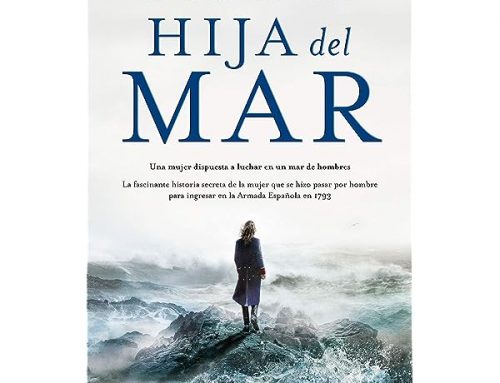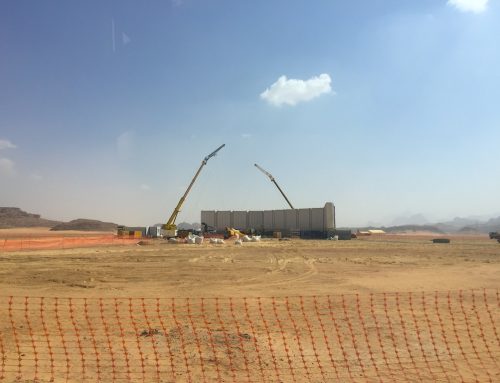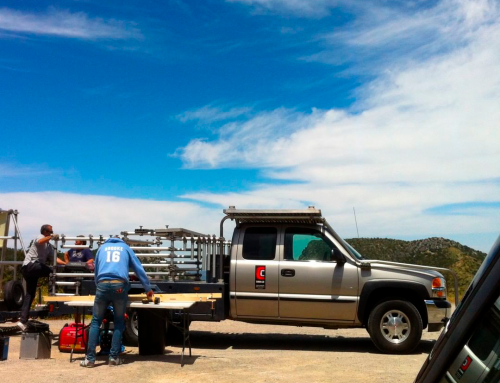Hidden between rocky mountains, Juzcar was a typical Andalusian village with narrow streets, white houses, a small square and a church until one day the people of the village decided to be ‘blue’. Transforming into ‘Smurf Village’, Juzcar provides a unique case of the collateral impact of tourism and free media coverage.
The economy of this town, like many others in the Serrania de Ronda, was based on natural products from the ground (mainly chesnuts and mushrooms) as well as typical gastronomy, handycrafts and all sorts of pork meat products. Juzcar is known for its own traditional cuisine based on mushroom recipes.
Before the screen tourism effect produced by The Smurfs, the village was vaguely known for being a place linked to the mushroom culture. Annually Juzcar held the Mushroom Fair and the Mycological Journey which represent two of the most important events of the region.
 The story started when Bungalow 25, an international advertising agency, was contracted by Sony Pictures for the worldwide launching of the film The Smurfs . The process was very similar to that of finding a location for a film production. The agency got in touch with the Mayor of the town, David Fernández, in order to make an unusual offer associated with the promotion of the film in the run up to its world premiere. It is important to note that Juzcar, as a location, did not appear in the film and that production of The Smurfs took place thousands of miles away in New York, a city generated by CGI.
The story started when Bungalow 25, an international advertising agency, was contracted by Sony Pictures for the worldwide launching of the film The Smurfs . The process was very similar to that of finding a location for a film production. The agency got in touch with the Mayor of the town, David Fernández, in order to make an unusual offer associated with the promotion of the film in the run up to its world premiere. It is important to note that Juzcar, as a location, did not appear in the film and that production of The Smurfs took place thousands of miles away in New York, a city generated by CGI.
The process of getting candidates for this promotion was not easy. The concept developed by Bungalow 25 for Sony Pictures was a competition in which the selected village would be painted completely in blue. Three villages were preselected from across Spain, all of them with similar characteristics, but the enthusiastic reaction and support of the Mayor of the city, David Fernández, made Juzcar stand out. Javier Cavanillas, CEO of Bungalow 25 said: ‘…the authenticity of Juzcar was fundamental for the final decision. Especially its identity as a community because it matched perfectly with the requirements of the Smurfs’ way of life that we all see on the screen. In essence Juzcar was real and authentic with the branding ‘Smurfs’.
![Hotel Bandolero. Left to right: Paulino Cuevas, me; David Fernández, Major of Juzcar; the “Smurf” and David Nuyen, owner of Hotel Bandolero Foto: @Paulino_Cuevas]](https://euromedia.live-website.com/wp-content/uploads/2022/03/Júzcar-pueblo-Pitufo-2-300x224.jpeg)
Hotel Bandolero. Left to right: Paulino Cuevas, me; David Fernández, Major of Juzcar; the “Smurf” and David Nuyen, owner of Hotel Bandolero.
The City Council decided that they could not let this lucky streak pass by. The Municipality led by the advertisement agency worked to make the world wide release an enormous success. Entrepreneurs and citizens gathered with the determination to organize a task force for the development of business and infrastructure required to address and mitigate the needs of the tourists.
The collaboration between the agency and the Municipality of Juzcar was such a good experience that years later the village was called on again by Bungalow 25 and on 23 July 2013 they hosted the worldwide release of Smurfs 2. Juzcar once more reached levels of popularity that they never could have imagined.
In spring 2011 all of the 175 buildings of Juzcar were painted. 4,000 liters of paint were used. Special permission from the regional government and the local bishop was required, as even the church and the gravestones were painted blue. In December 2011, Sony offered to repaint the town white. Citizens voted to leave the buildings painted blue, as an estimated 80,000 tourists visited in the six months following the repainting. The town had previously seen 300 tourists per year.
 What will happen in the future? Juzcar is working on how to maximize the opportunities but the lack of budget is one of their weakest points. Currently the village and the business association work together in developing a full program of activities for weekends and holidays all year round. About the ‘future blue’ of Juzcar, David Fernandez says it could not be better. The people of Juzcar are a people with higher expectations in business and employment, which is most important in these times. Júzcar wants to continue promoting the people through the development of activities that add value to its natural resources as well as encourage and promote local tourist services to improve them and further meet the needs of visitors.’
What will happen in the future? Juzcar is working on how to maximize the opportunities but the lack of budget is one of their weakest points. Currently the village and the business association work together in developing a full program of activities for weekends and holidays all year round. About the ‘future blue’ of Juzcar, David Fernandez says it could not be better. The people of Juzcar are a people with higher expectations in business and employment, which is most important in these times. Júzcar wants to continue promoting the people through the development of activities that add value to its natural resources as well as encourage and promote local tourist services to improve them and further meet the needs of visitors.’
After the promotion and subsequent release of the film, between 1,000 and 3,000 people began arriving each day. More than 80,000 tourists visited Juzcar during the coming months and the City Council had to hire three additional police officers in order to enhance security and traffic control. During this explosion of tourism it became evident that there was a lack of infrastructures such as roads, signage and parking, coupled with a lack of restaurants, hotels and ‘simple’ activities. In the words of the Mayor: ‘we were not prepared for so much success. ’
The City Hall thought that somehow linking the image of Juzcar with other products could help to retain tourists in their village. The Mercapitufo (street market) held each weekend and on holidays, has up to 20 stalls selling Smurf-related artefacts, souvenirs, and culinary delicacies. There is an open air painting competition ‘Paint my people’, a Mycological exposition, the Anniversary Smurf Village, and Blue Moon Festival which includes music and cultural events.
With The Smurfs tornado different businesses were created including a Tea House (2 employees), the Gift Shop ‘Miracles’ (2 employees) and World Smurf (2 employees), Bar El casarón (3 employees), Clinical Juzcar (1 doctor), and Bar Moclón, with multi adventure activities (3 jobs on average). During the weekends Juzcar has activities that require more people to work in order to meet demand (4 or 5 on average).
![Church of Juzcar [Foto: @Paulino_Cuevas]](https://izzan.grupoqz.net/~euromedia/wp-content/uploads/DSC_1894-235x350.jpg)
Church of Juzcar [Foto: @Paulino_Cuevas]
Some locals said: ‘…we had the same craftsmen and products of the same quality. The Juzcar dried chestnuts, honey, mushrooms… even Juzcar t-shirts. The sales were quite limited. After the premiere of the film we saw it coming and we began to add the word ‘Smurf’ after every single product. Thus chestnuts are called ‘Chestnuts from Juzcar the Smurf Village’ or ‘Honey from Juzcar Smurf Village’. Now, every weekend, these products are all snapped up.’
Since Juzcar was recognized as the First World Smurf Village, on June 16, 2011, they had received almost 180,000 visitors as a direct result of screen tourism. According to the mayor, Juzcar now has an average of 2,000 visitors every weekend, about ten times its own population. Another result of the screen tourism effect was the creation of the first business association to integrate many of Juzcar´s inhabitants. The influx of tourists associated with the film breathed an entrepreneurial spirit into the inhabitants of Juzcar. As a result new businesses started to open: a sandwich shop, a gift shop, a public pool, craft shops, tea rooms, bars, restaurants and a private clinic. Even the usual hotel, the Hotel Bandolero, rebranded its restaurant to become ‘The Smurfs Hotel’, now full every weekend with customers having to wait for a table.
The existing businesses, and the newly created, adapt their marketing to what is assumed in the collective imagination to be related to the world of the Smurfs. The city is transformed, with their traditional products and services tailored to meet the diverse demands of the tourist. ‘All the products determined to take the word ‘Smurf’ seemed sold as if by magic’ recalls David Fernandez.
The City Council has been pushing a plan to encourage the opening of empty houses in order to expand the number of beds available in the village, thus increasing and improving its tourist capacity. It also plans, supports and promotes various activities that stimulate entrepreneurship in the area. These projects include the pending plan for an Interpretation Centre of Mushrooms that David Fernández considers the flagship project of the presiding corporation.
![Streets of Juzcar [Foto: @Paulino_Cuevas]](https://izzan.grupoqz.net/~euromedia/wp-content/uploads/EUSC3-350x235.jpg)
Streets of Juzcar [Foto: @Paulino_Cuevas]
From an economic point of view the main effects on Juzcar, besides the brand impact, was the volume of positive media coverage. Without investing any money on advertising, the promotion of The Smurfs meant that Juzcar not only welcomed huge numbers of new tourists visiting the place, but also more than a hundred journalists. About sixty media companies around the world brought free media coverage estimated at a value of €6 million in Spain alone and €19 million all around the world.
In terms of employment generated in this population of 250 inhabitants, it should be stressed that this is the only town in Andalusia where there is no unemployment. The twelve unemployed people at that time found jobs. The only hotel in the village, Hotel Bandolero, which previously ran with minimum staff, had a staff of six to carry out its operation. Also the Bar Torricheli, in which two staff were previously employed increased its workforce to six during the weekends.
All of these activities have begun to bear fruit and visits received since the village was painted blue stands at over 180,000 and are still growing.
‘Smurf Village’ is a good example of creative marketing activities emerging from partnerships between private and public partners. The painting blue of the houses in the village of Juzcar for the promotion of The Smurfs was triggered by an advertising agency and accepted by the village mayor.
It is also a good example of how a production (which has not even been shot in a location) can create job and business opportunities immediately.
If you are interested please contact me @Paulino_Cuevas or take a look to Euroscreen Case Studies




